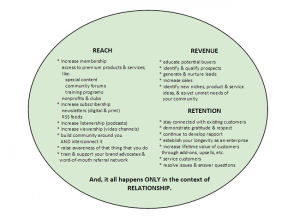Small businesses encounter a variety of challenges, most of which have an impact on their finances. They have a higher vulnerability to the impact of poor decision making and inefficient financial management, than medium or large businesses. Poor decision making arises when decision-makers use inaccurate, irrelevant or outdated financial data while relying more on assumptions and estimations.
To measure their business performance accurately, a company must design, build and follow an organised financial structure which goes hand in hand with their company goals, objectives and the overall organisational culture. This can be done by employing tools that help you objectively track your company’s performance and its financial health. KPIs are one of the many tools that serve as quick measures to check the financial health of a business accurately while tracking objectives and milestones. You need to make sure that the key ingredient for effective financial performance has been set up to avoid problems in the future when relying on using KPIs for effective decision making.
What are KPIs?
Key performance indicators are quantifiable measures that are developed to evaluate the success of a company, a project or a milestone when trying to accomplish a set goal. Different types of KPIs are used by businesses to measure and evaluate the level of performance in different areas of their company, ranging from administration, supply chain management, human resource, and finance.
KPIs are very useful in focalizing the attention of business owners towards the critical aspects of a business. It also helps provide a pool of information that is relevant for effective decision making in the form of short and simple data packets.
8 important financial KPIs to measure business performance
1. Net profit
Net profit defines your net financial progress, it is the funds left after all of the expenses have been deducted from the total income. Expenses incurred are of two types, indirect expenses, and direct expenses.
Net profit =Total revenue- Total expenses
For instance, if your sales amounted to £ 20,000 and your expenses, that include your bills, employee salaries, etc, amount to £ 12,000, then your net profit is £ 8,000
Remember, your business revenues and expenses should always lead to net profits for positive business health instead of net losses. There are certain businesses which might not have net profits such as a not for profit organisations or research and development businesses, you can use other KPIs to measure their performance.
2.Net profit margin
The percentage of profits earned after deducting your business expenses, both operating and non-operating, from your business revenues is your net profit margin. Net profit margin takes into account all of the expenses incurred, unlike gross profit margin which only considers direct expenses.
Net profit margin = (total revenue- total expenses) / total revenue
For instance, your business earned you a good £100,000 revenue, but your expenses are projected to be around £ 70,000, your net profit margin will be
Net profit margin=(100,000-70,000)/100,000=30%
Net margins may vary from industry to industry, but it’s important to note that these figures help you get an insight into your potential profits in the future and also help you devise policies that allow cutting non-value adding costs to improve the overall margin.
3.Gross profit margin
The percentage of profits earned after the cost of goods which have been sold are deducted from the total business revenue. Cost of goods, in this case, can also be the expenses incurred whilst selling a service.
Gross profit margin=(revenue-cost of goods sold) / revenue
For instance, you earn £ 200,000 in revenues and the cost of goods sold is £ 120,000 then your gross profit margin will be
Gross profit margin= (200,000-120,000) / 200,000=40%
It’s very important that your COGS do not exceed your total revenue. You should have sufficient gross profit to cover your operating expenses (fixed costs), and additional savings on top that can be reinvested in other areas of your business.
Remember, that a sustainable business’s gross profit margin should be more than or equal to 10%, margins lower than that, should be a warning to you.
Like net profit margins, gross profit margins may vary from industry to industry.
4.Current ratio
The current ratio as a key performance indicator is important for your business and your creditors both. For businesses, it helps you provide an estimate of your business’s liquidity, that is to check whether you have sufficient cash in hand to sponsor a large purchase or project.
For creditors, the liquidity aspect of this KPI helps them determine the probability of your business repaying a loan.
Current ratio= Current assets/Current liabilities
Remember that the current ratio of your current assets to your current liabilities should fall between the range of 1.5 and 3. A Less than 1 current ratio depicts the shortage of cash to pay your business bills. This indicator also helps you track your cash flow problems early on.

5.Customer acquisition ratio:
The customer acquisition ratio is another KPI that helps you to determine how much revenue you earn per each new customer acquired.
To understand the customer acquisition ratio, you need to focus on two key terms. First is the net expected lifetime profit from a customer, which can be determined by estimating the number of times a customer makes purchases and the average purchasing price.
Second is the cost to acquire a new customer, which can be determined by taking into account the expenses incurred on marketing and advertising. These figures might vary from company to company.
Customer acquisition ratio=net expected lifetime profit from a customer / cost to acquire a customer
For instance, if your customer acquisition ratio results in 5, it means that you are earning £ 5 for every £ 1 spent on acquiring a new customer.
Remember, if this ratio exceeds one, than you do not need to worry about your customer acquisition strategy, but if it falls below one then that is a sign that your spending on customer acquisition is only resulting in losses. A ratio of higher than one indicates that your investment is paying off well.
6.Quick ratio
The quick ratio is another KPI that holds significant importance in determining a company’s financial capacity to meet all of its short term liabilities. Whilst current ratio shows the probability of a company fulfilling its financial liabilities within a time period of a year, quick ratio is a better measure to investigate the company’s liquidity to meet its financial debts by providing quick and relevant results. It may also be referred to as the ‘Acid test ratio’ in some instances.
Quick ratio = (current assets – inventory) ÷ current liabilities
7. Inventory turnover
Inventory turnover is one of the many financial metrics that is used for the purpose of checking the financial health of a business regardless of the company’s size. Inventory turnover represents the frequency of inventory that is sold and replaced within a time period of a year.
Inventory turnover can be determined by using these two equations:
Inventory turnover= Sales/Inventory
Inventory turnover= Cost of goods sold/Average inventory
If your inventory turnover turns out to be low, then it means that a company has a surplus of inventory at its end year-end and that its ability to generate sales is poor. Whilst a high turnover rate indicates that the business is maintaining a well profitable balance.
8. Return on Investment
Return on Investment is one of the key KPI’s every business needs to be using, to determine the effectiveness of an investment or to compare multiple investments. ROI measures the return generated on a particular investment compared the investment made. In order to calculate ROI, the return generated by an investment needs to be divided by the cost of the investment. The result is either a percentage or a ratio.
The ROI formula is
ROI = (Present Value of Investment – Investment Cost) / Investment Cost
Why it’s important to define your goals and objectives before using any of the key performance indicators?
When shortlisting the most suitable KPIs to determine your business’s financial health, you should remember that an effective KPI is the one that is measurable and provides insight into the probability of your business reaching its strategic goals. The use of a particular KPI may be relevant to one business and irrelevant to another, as the needs may vary from business to business.
It is therefore very important to look out for the relevant KPIs for your business, depending on its needs and the stage it is in. It is also advisable to be familiar with key finance terminologies before setting your KPI’s.
It is always advisable to understand your business objectives before setting your KPI’s but once your objectives are in place, KPI’s are a valuable tool to track and monitor the performance of your set objectives in the most effective way.
Business & Finance Articles on Business 2 Community
Author: Jibran Qureshi
Jibran Qureshi is the Managing Director of Clear House Accountants, a Chartered Certified Accounting firm in London that offers Accounting, Tax, Business Advisory, Corporate Finance, Management Accounting and Outsourced CFO services, while also providing bespoke solutions to complicated business problems. He envisions the firm to become one of the… View full profile ›
(95)









